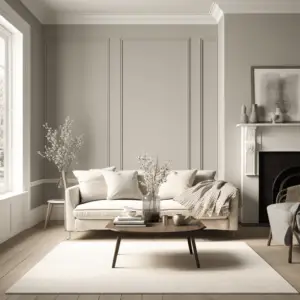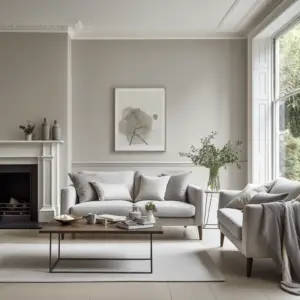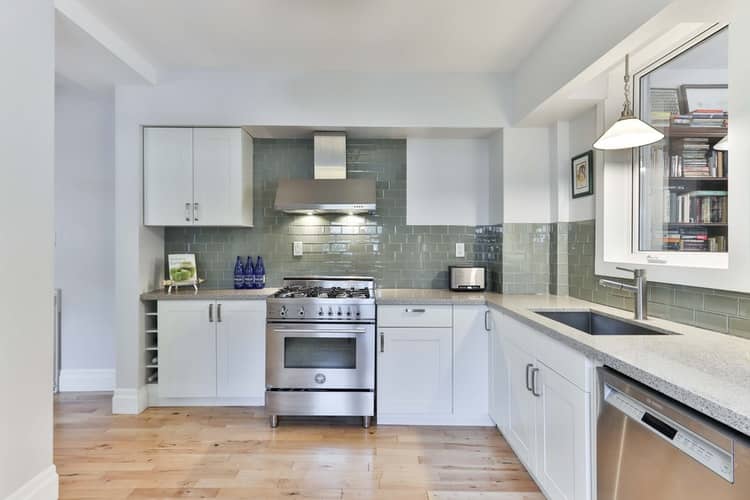Repose Grey and Agreeable Grey, Every color comes in an extensive array of shades and hues.
Grey is no exception so in this article, we will review two specific shades, Repose Grey Vs Agreeable Grey, and which of the two is the better shade for your home.
Walk into any room, be it your home, a restaurant, your doctor’s office, your favorite nightclub, or the supermarket, and the first thing your mind clocks is whether the place is inviting and appealing, bland and plain, or repulsive.
The colors of any room are the most significant consideration for this assessment whether you are conscious of it or not.
Beauty lies in the eye of the beholder so these judgements are subjective, but trends heavily influence what we believe to be beautiful and fitting.
Trends come and go only to cycle back and currently grey is the most popular color for homes and even workspaces at the moment.
Traditionally, grey has always been viewed as a cool but dull color for pretty much anything and was largely left to grace offices and corporate spaces.
In the last few years, however, grey and its variations have experienced an uptake as a color for the home and is now a favorite for many designers and interior decorators.
Table of Contents
Characteristics of Agreeable Grey

Sherwin Williams Agreeable grey is currently the most popular shade of gray for home owners.
It is described as a greige color (slang for combinations of beige and grey) since its appearance leans slightly towards beige.
Its has a warm note with undertones of brown and violet. It goes well with other shades of grey and also complements well with stronger colors like white, black, and brown.
Characteristics of Repose Grey
Sherwin Williams Repose Grey is the second most popular shade of grey after Agreeable Grey.
The two hues are nearly identical with the only difference being that Repose Grey is slightly darker than Agreeable Grey but to a degree, so minuscule only the discerning shopper can tell the difference.
The darker shade gives Repose Grey a cooler tone compared to Agreeable Grey and it has undertones of green and taupe.
Repose Grey also pairs well with black, navy blue, brilliant white, and some shades of green.
How to Choose Between Agreeable Grey and Repose Grey
Draw Up a Room Plan
Before committing to any kind of paint for an entire room, draw out the plan with a clear idea of what fixtures belong where.
This will give you at least a visual idea of how everything will mesh with the color you pick.
If you have a fireplace in your living room, for instance, the orange tones or the brick red color of the fireplace may mean that Agreeable Grey would be a better fit for that particular wall.
Pictures, artwork, and other murals will also be important considerations. The color you pick for the wall they are mounted on acts as a background and impacts the overall aesthetic of the wall hangings.
Depending on the artwork on your wall, Agreeable Grey can provide a warmer background while Repose Grey would make for a somber background.
You may also consider using Repose Grey for two walls and Agreeable Grey for the other two if the aesthetic agrees.
Undertones and Lighting
By loose definition, undertones are the colors that come to mind when looking at a shade of color and are a huge factor in the eventual aesthetic value of a room.
Though very close in hue, Agreeable Grey and Repose Grey have different undertones and these can create wildly different looks.
Undertones can also change at different times of the day depending on the lighting the room receives.
The cooler Repose Grey can appear almost blue in the dim light of dawn and dusk while Agreeable Grey can appear muddy beige or a shade of light brown in natural lighting depending on how the sun’s rays reflect on it.
If the undertones agree with the overall look and feel of the room, the final product will be a splendid picture of perfection. If not, the end product just will look awkward and mismatched.
Sample the Colors
It cannot be stated enough just how essential testing colors is, in the process of painting a room. It is always tempting to look through catalogs of color and pick shades assuming the mental picture you have will materialize.
Often, the result is underwhelming if not disappointing. Take the time to pick a spot on each wall, and paint both colors in small patches.
Observe the appearance of these patches over several days and it will surprise you how much your final choice will deviate from your initial choice.
Other Colors in the Room

Other items in the room also contribute to the overall picture that the room will portray after it has been painted.
Couches, tables, bedding, the floor, the ceiling, and other fixtures also add color to the room and will either complement beautifully or clash with the wall paint.
A good rule of thumb is to work with the undertones and let them guide you in choosing between Agreeable Grey and Repose Grey.
A navy blue or deep blue couch would appear to sit better against a backdrop of Repose Grey, for instance than Agreeable Grey while a brighter beige couch will perform better against Agreeable Grey.
A chocolate brown hue on your seats would likely overpower both shades though essentially, these nuances may come down to a matter of taste than any hard and fast rules of color and design.
Purpose of the Room
Both Agreeable Grey and Repose Grey are excellent choices. However, some rooms simply work better with cooler hues than warmer ones.
Color has been shown to affect us psychologically and is powerful enough to influence us on an unconscious level.
Consider a home office for instance. Though either would make a suitable wall color, the cooler Repose Grey may look sleeker and give an air of gravitas while the same color would appear almost uninviting in a toddler’s bedroom.
Verdict
Repose Grey Vs Agreeable Grey is a moot point in itself. The choice is entirely dependent on the factors above so consider carefully each of these factors before committing to either and enjoy the result!


